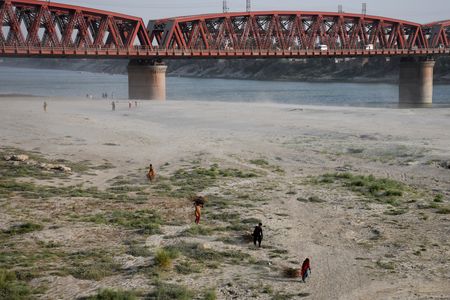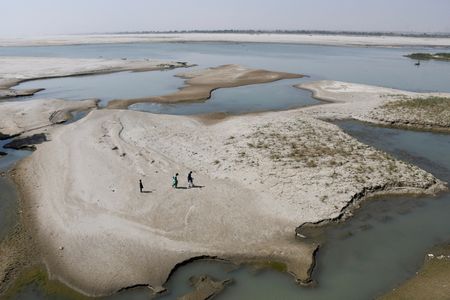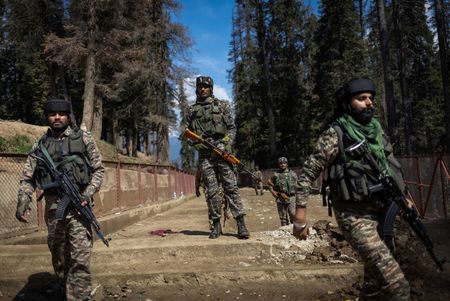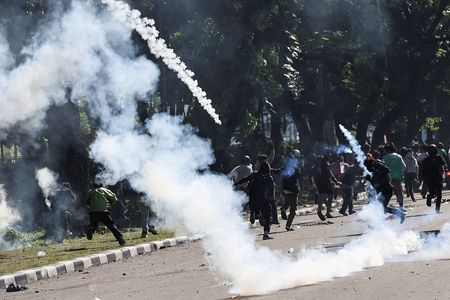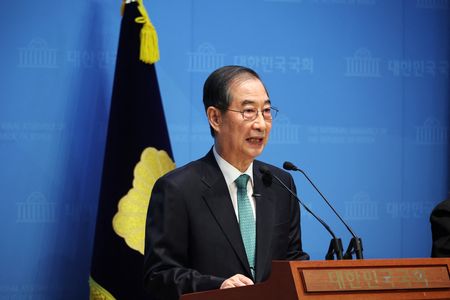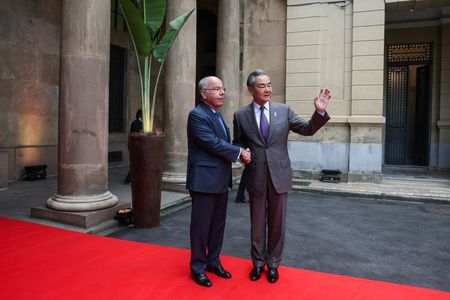By Sarita Chaganti Singh, Ariba Shahid
NEW DELHI/KARACHI (Reuters) -India suspended its participation in the Indus Waters Treaty with Pakistan last month after the killing of 26 civilians in Kashmir, which New Delhi blames on Islamabad. Pakistan denies the charges, which led to the worst fighting between the countries in decades before a ceasefire was agreed last week.
The treaty had survived three wars and other conflicts between the bitter rivals, while withstanding many twists and turns in diplomatic ties. Reuters reported on May 16 that Delhi is considering projects that would likely reduce the flow of water into Pakistan from rivers allocated to that country.
India says it will “keep the treaty in abeyance until Pakistan credibly and irrevocably abjures its support for cross-border terrorism,” while Islamabad says “any attempt to stop or divert the flow of water belonging to Pakistan” will be an “act of war.”
WHAT IS THE INDUS WATERS TREATY?
The nuclear-armed neighbours disagree over use of the water from rivers that flow downstream from India into the Indus river basin in Pakistan.
The use of the water is governed by the Indus Waters Treaty, which was mediated by the World Bank and signed by the neighbours in September 1960.
The agreement split the Indus and its tributaries between the two countries and regulated water sharing. India was granted the use of water from three eastern rivers – Sutlej, Beas and Ravi – while Pakistan was granted most of the three western rivers – Indus, Jhelum and Chenab.
There is no provision in the treaty for either country to unilaterally suspend or terminate the pact, which has clear dispute resolution systems.
WHAT ARE THE CONCERNS OVER WATER?
The countries have argued over and disputed several projects on the Indus and its tributaries for years.
Pakistan is heavily dependent on water from this river system for its hydropower and irrigation needs. Pakistan says India unfairly diverts water with the upstream construction of barrages and dams, a charge India denies.
Pakistan is concerned that India’s dams will cut flows on the river, which feeds 80% of its irrigated agriculture. It has asked for a neutral expert and then an arbitration court to intervene in two recent hydropower projects.
India has accused Pakistan of dragging out the complaints process, and says the construction of its Kishanganga and Ratle hydroelectric projects is allowed under the treaty. It has also sought modification of the pact to get around such delays.
WHAT COULD THE SUSPENSION CHANGE?
The suspension of the accord is not expected to have an immediate impact on the flow of water to Pakistan as India does not have enough storage capacity. However, water at a key receiving point in Pakistan briefly fell by as much as 90% in early May after India started maintenance work on some Indus projects.
India’s move could also bring uncertainty to Pakistan’s agricultural system.
The suspension means India can stop sharing crucial information and data on release of water from barrages/dams or on flooding, Indian officials said, adding that New Delhi will also not be obliged to release minimum amounts of water during the lean season.
HOW HAS PAKISTAN REACTED TO THE DECISION?
Pakistan says the treaty is a binding international agreement brokered by the World Bank and contains no provision for unilateral suspension.
Ghasharib Shaokat, the head of product at Pakistan Agriculture Research, called the treaty the backbone of the country’s agriculture sector.
“It puts our agricultural future on shaky ground. If water flows become erratic, the entire system takes a hit — especially irrigation-dependent crops such as wheat, rice, and sugarcane,” Shaokat said.
“Yields could drop. Costs could rise. Food prices would likely spike. And small-scale farmers, who already operate on thin margins, would bear the brunt of it.”
Khalid Hussain Baath, chairman of a national farmers’ union in Pakistan, painted the move as an act of belligerence.
“This is a true war,” Baath said from Lahore. “We already have a water shortage because of climate change. Low rainfall this year, and limited snow means that the water level is already 20-25% lower than last year.”
(Reporting by Sarita Chaganti Singh in New Delhi and Ariba Shahid in Karachi; writing by Sudipto Ganguly in Mumbai; Editing by YP Rajesh and Aidan Lewis)


